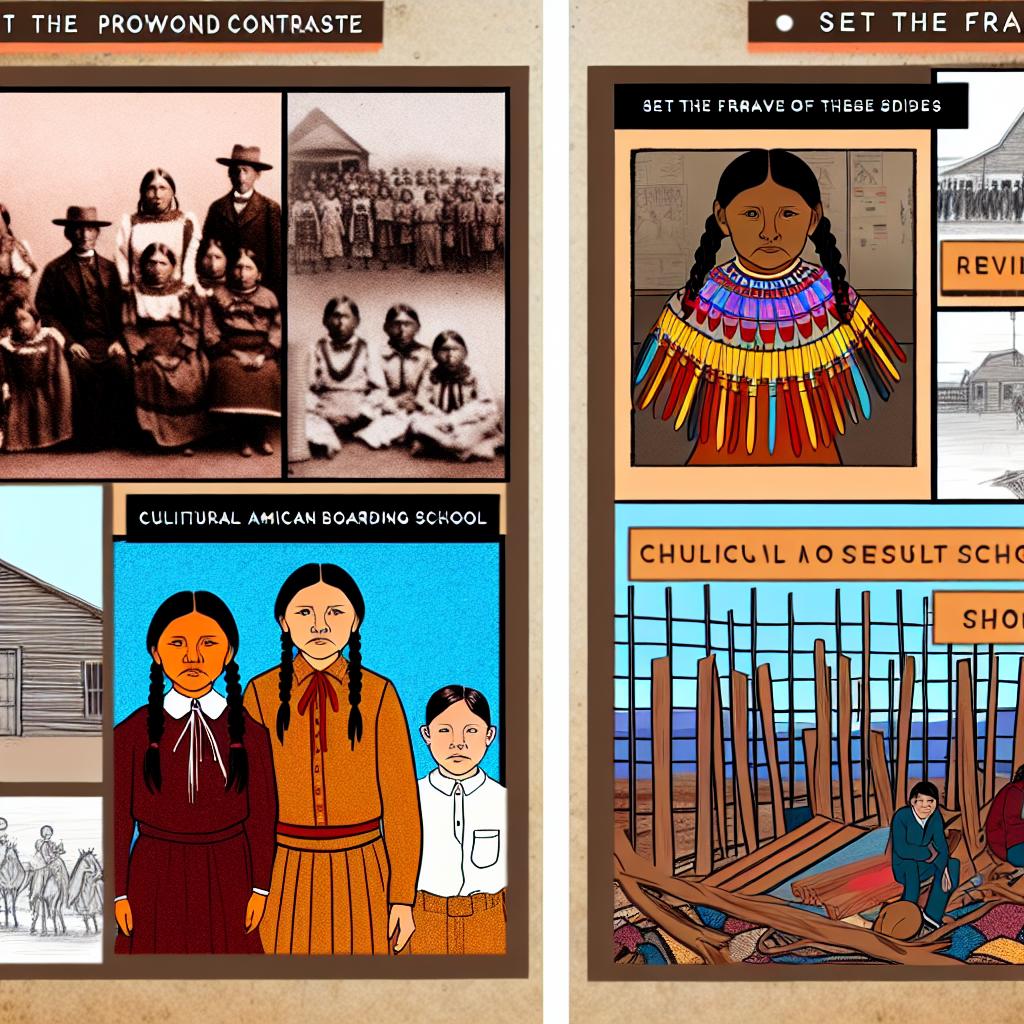Historical Context of Native American Boarding Schools
Native American boarding schools began in the late 19th century, anchored in the assimilation policies that were aggressively promoted by the United States government. These institutions were created with the intent of integrating Native American children into mainstream Euro-American society. At the core of this strategy was the deliberate aim to erase Indigenous cultural identities and supplant them with Western values and norms. The educational system was part of a more extensive agenda to exert control over Native lands and communities, reflecting a systematic effort to reconcile Indigenous peoples’ existence with the governmental ambitions of expansion and domination.
Formation and Operation of the Schools
The first significant institution of this kind was the Carlisle Indian Industrial School, which was founded in 1879 in Pennsylvania. The driving force behind this school was Richard Henry Pratt, and its motto, “Kill the Indian, save the man,” succinctly encapsulated the institution’s ultimate objective: to decimate Native culture so that assimilation could occur. This model soon gained traction and was adopted by the federal government, facilitating the establishment of similar boarding schools throughout the United States and even extending into Canada.
Once enrolled in these schools, Indigenous children were obligated to undergo significant changes that underscored the disconnect from their traditions and roots. Their hair was cut, marking a tangible severance from their cultural heritage. They were required to wear prescribed uniforms that imposed uniformity and discipline while also signifying cultural subjugation. Perhaps most strikingly, they were forbidden from speaking their languages, an injunction that stripped away a primary means of expressing familial and cultural bonds.
The daily regimen was a combination of academic instruction and manual labor. This structure was designed to reinforce the Western cultural paradigms being instilled, focusing on both mental and physical assimilation. Academic education often took a backseat to labor, which served as both a cultural lesson in Western work ethics and a practical function in maintaining the schools.
Effects on Indigenous Families and Communities
The establishment of Native American boarding schools had deep-rooted and far-reaching impacts on Indigenous families and communities. The enforced removal of children from their family environments disrupted traditional kinship networks and communal ties that were pivotal to the preservation of culture. As children were removed, so too were the conduits of cultural transmission, contributing to a decline in cultural knowledge and practice.
The trauma experienced within these institutions had a compounding effect on Indigenous children. Reports of physical and emotional abuse added layers to the struggles these children faced, compounding their disconnection from their roots. This abuse, both subtle and overt, led to a profound sense of loss and alienation, eroding trust and creating psychological barriers that many would carry throughout their lives.
Long-term Impact on Indigenous Populations
The long-term effects of boarding school policies resonate across generations, manifesting in the socio-cultural challenges faced by many Native communities today. The dilution and, in some cases, near-extinction of numerous Indigenous languages highlight the significant loss of cultural and intellectual heritage. With language being a critical carrier of culture, its erosion directly correlates to the diminishing traditional knowledge and cultural practices.
Moreover, the psychological repercussions of the boarding school experience have laid the groundwork for intergenerational trauma. Many Native American families and communities grapple with identity struggles, mental health challenges, and a sense of fractured community unity. These issues often persist today as older generations who experienced the schools pass on stories and traumas to their descendants, creating a complex legacy of hardship and survival.
Despite the long shadow cast by these historical injustices, many Native communities have actively engaged in initiatives to reclaim and revitalize their cultural heritages. This renaissance includes efforts to preserve endangered languages through various programs and curricula. Additionally, cultural education initiatives are proliferating, aiming to reinvigorate traditional practices and celebrate Indigenous identity in ways that were once forcefully suppressed.
Current Efforts and Acknowledgment
A significant cultural shift is now underway across the societal landscape, marked by an increasing acknowledgment of the atrocities perpetrated through the boarding school system. Both governments and institutions have gradually begun to issue formal apologies and, in some cases, provide reparations to acknowledge and rectify these historical wrongs.
In tandem, there is a burgeoning movement towards developing Indigenous-led education models that honor traditional knowledge systems and values. This paradigm represents not only a rejection of colonialist educational practices but also an affirmation of Indigenous culture and its rightful place within the broader tapestry of society.
For those interested in a deeper exploration of the historical context and its reverberations in modern times, there are various educational resources and archival materials available. Institutions such as the National Museum of the American Indian and the National Native American Boarding School Healing Coalition offer comprehensive insights. These resources are invaluable for gaining a more nuanced understanding of the complex legacy left by these boarding schools and the ongoing healing and reclamation efforts underway in Native communities.

